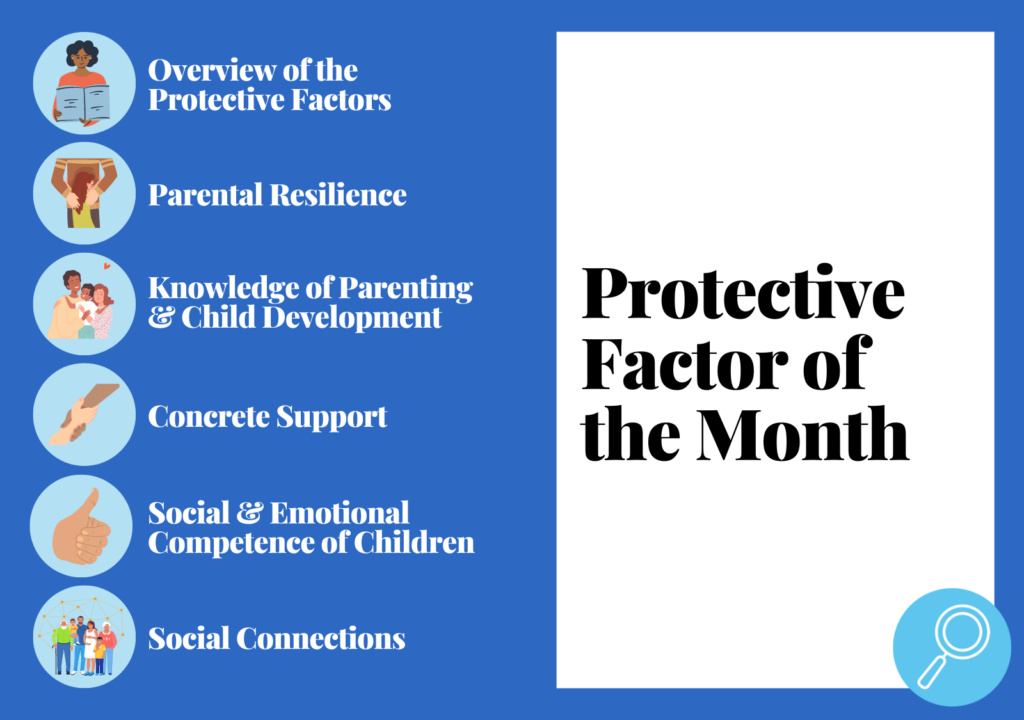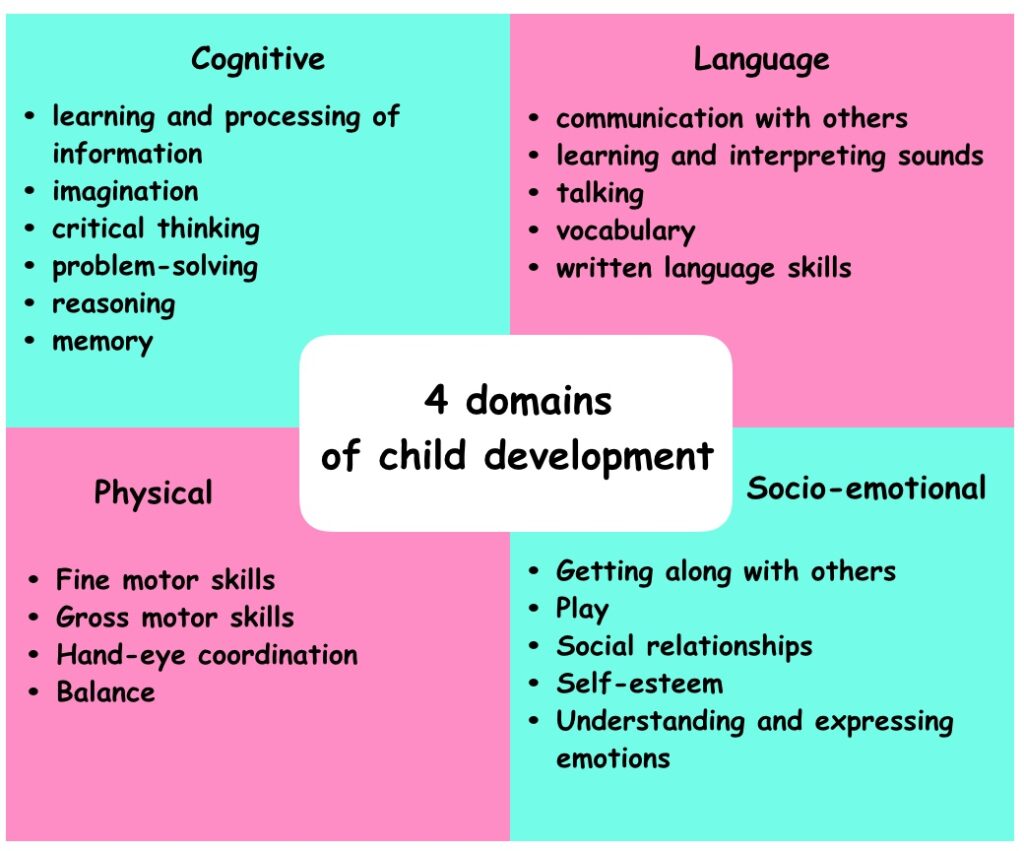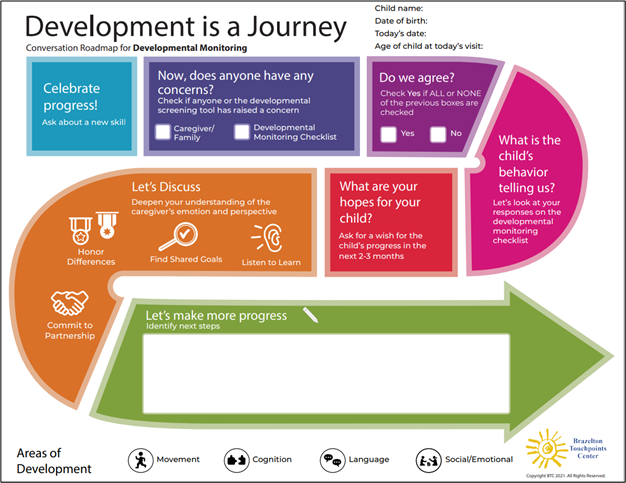Part One: An Overview of Child Development
As part of CalTrin’s Nurturing Parent and Child Development training, we will explore the stages of child development and share practical tips for parents and caregivers.
Childhood development is a process that every child goes through. It involves learning and mastering skills like walking, talking, skipping, and tying shoes. Children learn these skills, called developmental milestones, during predictable time periods. According to Dr. Pradeep Gidwani, MD, MPH, every child is born with the capacity to learn, and it’s the quality of the child’s relationship with their caretaker that nourishes that capacity. With secure attachment, quality emotional regulation, and a supportive environment, each generation can surpass the previous one in development and learning.
In part one of this blog series, CalTrin provides an overview of the four domains of child development and standard stages and milestones for development. Child- and family-serving professionals can help parents and caregivers navigate the free developmental resources highlighted in this post.
Four Domains of Child Development
There are four major domains of child development: Cognitive, Language, Physical, and Social-Emotional. While each domain is unique, they are all intertwined in a child’s development. This chart from Yale Baby School provides a quick overview of each domain.
In the article, Major Domains in Child Development, the author notes that a child’s development is a multi-faceted process comprised of growth, regression, and change in different domains. Parents and caregivers may notice development in certain domains appears more prominent during specific stages of life, yet kids virtually always experience some degree of change in all domains (Fraser-Thill, 2021).
Developmental Milestones and Screening
Skills such as taking a first step, smiling for the first time, and waving “bye-bye” are called developmental milestones. Children reach milestones in how they play, learn, speak, act, and move (CDC). Milestones typically develop in a sequential fashion, and each milestone builds on the last one developed. According to the Yale Baby School, an emphasis should be placed on how milestones matched with specific time periods are not meant to be a rule book each child needs to follow. Rather, the milestones give parents and caregivers a broader idea of when their child is reaching the next step in development.
In February 2022, the CDC released an update to the developmental milestones for infants and toddlers—this is the first update since the milestones were published in 2004. But what does this mean for parents, caregivers, early childhood professionals? In this ZERO TO THREE video series, parenting expert Rebecca Parlakian answered common questions that came following the updates, including when/if parents and caregivers should be concerned about their child not meeting milestones.
There are actions parents and caregivers can take to identify potential problems sooner through screening. The American Academy of Pediatrics (AAP) recommends developmental and behavioral screening for all children during regular well-child visits at 9 months, 18 months, and 30 months. In addition, AAP recommends that all children be screened specifically for autism spectrum disorder (ASD) during regular well-child visits at 18 months and 24 months.
Screening is effective and efficient and can help identify potential problems sooner.
Child- and family-serving professionals can use screening as an educational tool to show parents and caregivers how important they are in a child’s development. Get started with these developmental milestone guides and screening tools:
Center on the Developing Child at Harvard University
Explore the Center’s Resource Library, including resources that have been translated into a variety of languages.
Center for Disease Control (CDC)
- Learn About Child Development (en Español)
- CDC’s Developmental Milestones (en Español)
- Act Early Milestone Checklists: PDF Download and Digital
- CDC Milestone Tracker App (Google Play & Apple Store)
- Development Monitoring and Screening (en Español)
- Positive Parenting Tips (en Español)
- Concerned about Your Child’s Development? How to Get Help for Your Child Tip Sheet (English/Spanish)
Easterseals
- Define “Five”
- Ages & Stages Questionnaires®, Third Edition™ (ASQ-3)
Free access to the ASQ-3 is available for parents through Easterseals, with generous support from Comcast NBC Universal. The ASQ-3 helps track a child’s growth and development during their first 5 years
First 5 California
- Newborn Milestones
- Toddler Milestones
- Preschooler Milestones
- What Are Social and Emotional Development Milestones?
HealthyChildren.org
The Science of Parenting
- This initiative from Iowa State University Extension and Outreach connects parents with research-based parenting information through The Science of Parenting:
- Podcast
- Blog
- Ages and Stages Resources + Materials (English and Spanish)
ZERO TO THREE
- Revised Developmental Milestones for Babies and Toddlers: Your Questions Answered
- Your Child’s Development: Age-Based Tips From Birth to 36 Months
- HealthySteps Program
- Sparks Parent Video Series
Additional Resources
Child Welfare Information Gateway: Child Maltreatment and Brain Development: A Primer for Child Welfare Professionals
Lovevery: Parent Resources
Pathways.org: Baby Milestones App (en Español)
Sesame Street Workshop: Sesame Street in Communities Milestones (en Español)
University of Minnesota Center for Early Education and Development: Child Development for Child Welfare
Verywell Family: Child Development Guide: Milestones and Parenting Tips
To simplify, support, and strengthen sometimes challenging conversations about developmental concerns and screening results, the Brazelton Touchpoints Center has created the Development is a Journey Conversation Roadmap for family-facing providers. The Conversation Roadmap is designed to facilitate these conversations with seven short and simple steps to actively engage parents and other caregivers in planning for their child’s developmental needs and enhance the provider-parent partnership. There are four versions of the Conversation Roadmap: one for pediatric primary care providers, another for home visitors, and a third for early care and education providers, as well as a version for staff who utilize Developmental Monitoring checklists. Each version is accompanied by an Implementation Guide that describes how to use the Roadmap in your conversations with parents and other caregivers. Click here to download the Conversation Roadmap that works best for you!
Early Intervention
Per the CDC’s website, early intervention is the term used to describe services and support that help babies and toddlers (age birth to 3 years old in most states/territories) with developmental delays or disabilities and their families. Services may include speech therapy, physical therapy, and other types of services based on the needs of the child and family. Programs are available in every state and territory and are provided for free or at a reduced cost for any child who meets the state’s criteria for developmental delay. Some examples of California services and support resources include:
- Pediatrician’s Office
- First 5 Association of California Help Me Grow
- CDDS Early Start Program
- CDDS Regional Centers
- DHCS California Children’s Services
- DHCS Family Resource Centers
Studies show that early intervention can have a significant impact on a child’s ability to learn new skills and overcome challenges and can increase success in school and life (NECTAC, 2011). For child- and family-serving professionals outside of California, click here to view the CDC’s Early Intervention Contact Information by State (en Español).
Up Next: Social-Emotional Development + Extended Learning Opportunities
In part two of this blog series, we dive deeper into how social-emotional development occurs in the context of relationships and the important role parents and caregivers play in nurturing this domain. Read Part Two: Social-Emotional Development now!
This post highlights information and resources shared by Dr. Gidwani in the CalTrin-hosted webinar, Nurturing Parent and Child Development. Watch the replay and access materials from this webinar online here (scroll to bottom).
Here’s what participants said about this training and their plans to apply what they learned:
- [This training] gave me a stronger understanding of how I can engage caregivers and help them understand their child’s development and behavior as well as ways to enhance attachment and the parent/child relationship.
- Having an understanding of reasons why it is important to reach babies milestones. How providing the appropriate level of nurturing is important.
- During home visits, we work with parents with intellectual and developmental disabilities who will benefit from the information provided during the webinar.
- I am better prepared to support families in speaking with PCPs and School Districts so children can receive the assessments and support they need to achieve their full potential.

Additional training on child development and social-emotional development is available through CalTrin’s Protective Factor of the Month training series. This learning series is designed for anyone who works with children and families and focuses on concrete ways you can support the building of Protective Factors in your work. Each month, CalTrin will present one Protective Factor in an engaging lecture-style presentation, and learners have the ability to register for individual sessions of interest. Each session will be presented with optional Spanish interpretation (con interpretación en español). Click here to view the schedule and register for the sessions that meet your learning needs and schedule.
During a prior Knowledge of Parenting & Child Development webinar, we asked participants to share their favorite website resources for parenting and child development. Here is what they shared:
- Alameda Kids
- Attachment Nerd
- Brazelton Touchpoints Center
- The California Evidence-Based Clearinghouse for Child Welfare (CEBC)
- California MAP to Inclusion & Belonging
- Centers for Disease Control and Prevention (CDC)
- Family Paths
- Just In Time Parenting
- The National Child Traumatic Stress Network (NCTSN)
- Parents as Teachers
- Pathways
- Positive Parenting Program
- Sesame Workshop
- ZERO TO THREE
*Last updated December 19, 2023


